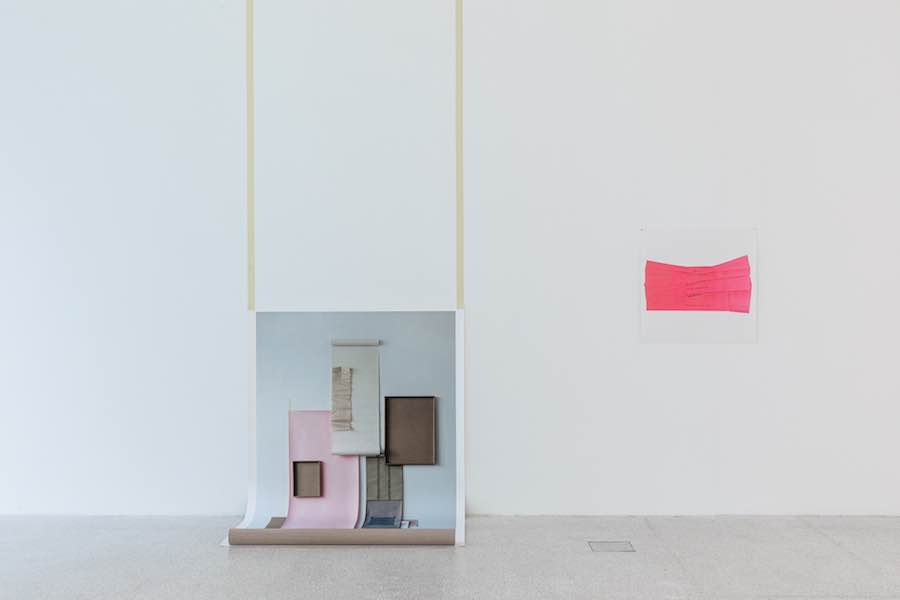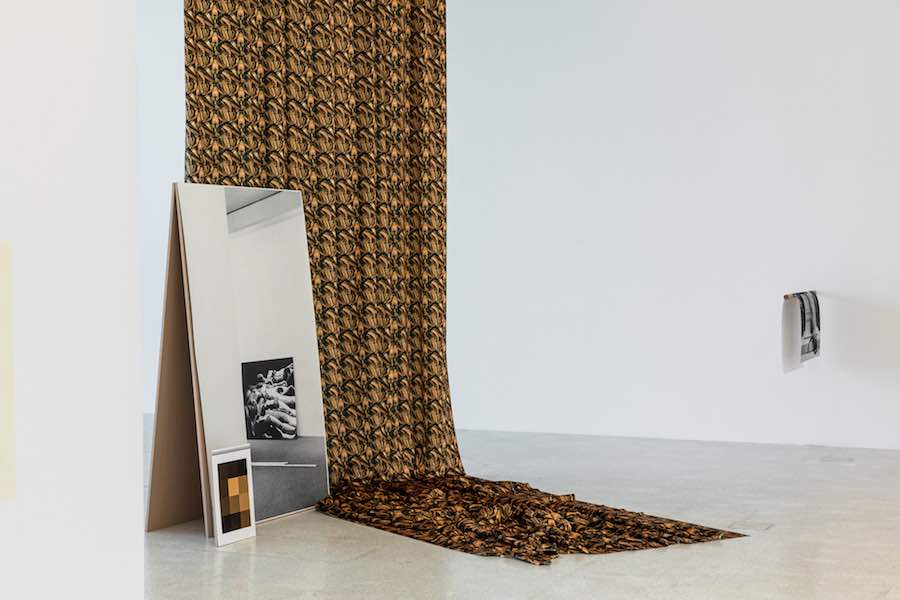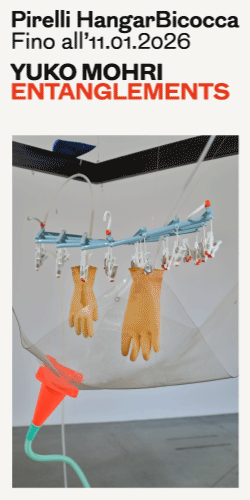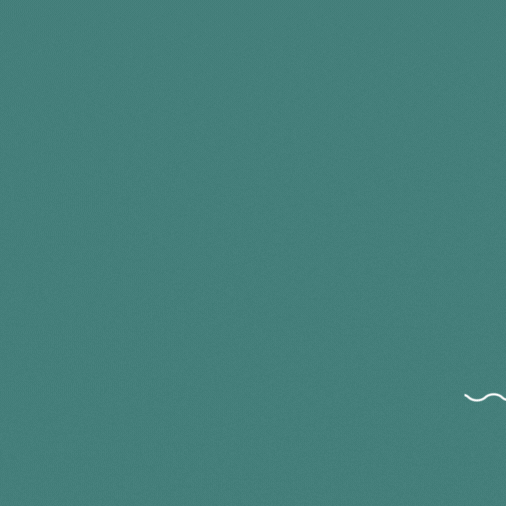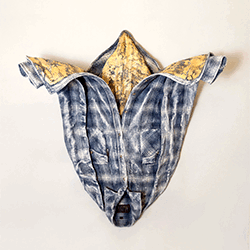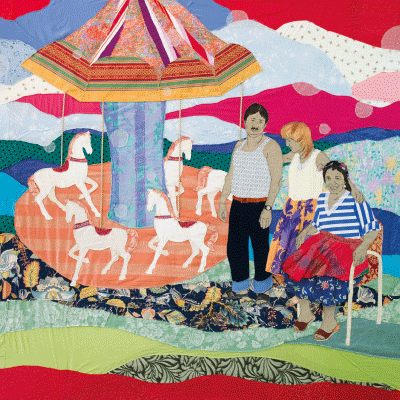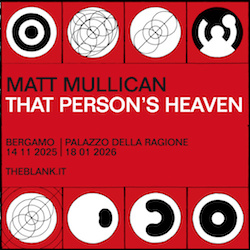

English version below —
Mirror Language è la prima mostra antologica europea, e la prima presentazione in Italia, dedicata a Jimmy Robert (Guadalupa, Francia, 1975, vive e lavora a Berlino). La mostra, ospitata dal 29 maggio al 29 agosto 2021 al Museion di Bolzano, raccoglie lavori creati da Robert negli ultimi vent’anni. Lavori individuali –testi, collage, fotografie, sculture o performance – descrivono una transizione momentanea, un’eco, un’espansione frammentata in cui risiede il problema stesso dell’autorialità.
I lavori esposti in Mirror Language sono in teoria incompleti, sostituti temporanei di riflessioni più ampie sull’eredità, valore che oggi continua a essere razzializzato e genderizzato.
Abbiamo intervistato Jimmy Robert in quest’occasione.
Sara Benaglia: Che cosa è la vulnerabilità della carta per linguaggio e gesto?
Jimmy Robert: La vulnerabilità della carta è per me equiparabile a quella di linguaggio e gesto. Sono interdipendenti. Sono appena tornato da una conferenza alla Royal Danish Akademie sul tema del perché le parole ora e in questo talk ho menzionato come per me le parole su una pagina hanno quasi una porosità proprio come la pelle per cui potrebbero diventare un accesso verso un altro senso e trascendere la pagina proprio come il linguaggio è più delle parole ma ci influenza nel reale e ci porta ad agire o sentire in un certo modo, allo stesso modo un gesto può essere letto in molti modi quindi è anche parte delle nostre emozioni e svela alcune delle nostre vulnerabilità/sensibilità.
SB: Come giochi con il movimento nella scenografia di una mostra, senza una performance o la performance di un oggetto?
JR: Mi piacerebbe pensare di coreografare il movimento da un’opera all’altra, così come un potenziale spettatore deve rinegoziare il suo rapporto con le opere d’arte nello spazio e non dare questo rapporto per scontato. C’è ancora del lavoro da fare mentre si guarda una mostra, delle scelte da fare. Un percorso da scegliere che influisce su come si può comprendere una pratica, un punto, una frase, il significato stesso alla fine. Questo implica che ci si possa piegare per guardare qualcosa sul pavimento che normalmente si trova su un muro, mettere in discussione il muro stesso come il luogo ovvio dove si suppone di trovare un’opera d’arte. Avere una prossimità che sottolinea la propria corporeità, il tocco, il respiro o i passi se si calpesta la carta bianca sul pavimento, segnando così la propria presenza nella mostra.
SB: Che affinità c’è tra il tuo lavoro e quello di Stanley Brouwn (Suriname, 1935 – Amsterdam, 2017)?
JR: stanley brouwn, come voleva che fosse scritto il suo nome senza maiuscole mi è rimasto sconosciuto per un bel po’ di tempo e la ragione di questo potrebbe essere stata la sua desiderata invisibilità che naturalmente crea non solo un’aura ma anche curiosità. Immagino che per lui l’opera sia fondamentale al di là della sua personalità ma per me la cosa più interessante è come nonostante questa invisibilità il suo corpo sia la partenza per molte delle sue opere e quindi diventa un modo di marcare lo spazio e misurarlo attraverso la sua soggettività e inscrivendosi nel mondo stesso da cui ha cercato di allontanarsi.
SB: Alcune delle tue opere nascono dal recupero di ritratti a cui aggiungi un pezzo di carta piegato per dargli una dimensione in più (forse la vita?). Come è nato questo processo?
JR: Questo processo è nato da una frustrazione per i limiti materiali della fotografia e forse della vita stessa, nel senso che l’atto di rappresentare è molto limitato non solo in termini di chi viene rappresentato ma anche come. La piattezza delle immagini è sempre stata problematica per me e aggiungere uno strato a esse significa dar loro un corpo, di cui sento esse mancano, una superficie ulteriore che complica la loro lettura. Una copertura per rivelare ancora di più che molto è nascosto all’interno di un’immagine anche se inizialmente essa finge di rivelare informazioni.
SB: Qual è la relazione tra la scelta dei materiali che usi nel tuo lavoro e il rispecchiamento in te, nella tua idea, attraverso il lavoro?
JR: Uso la carta come superficie di proiezione, la carta, le parole, le immagini, i film sono tutti specchi di idee sulla rappresentazione, la performance, l’identità, il genere, il desiderio e come negoziare tutte queste cose in relazione ai nostri retaggi storici dell’arte e spero che lo spettatore possa riflettere in entrambi i significati della parola, pensare e ottenere un’immagine di sé stesso indietro.
SB: La fotografia è una performance?
JR: Non lo so chiedilo a tutti quei ragazzi che passano ore a preparare una foto prima di postarla su instagram! Se non è una performance allora almeno è un sacco di lavoro, o forse un sacco di negoziazioni con il mondo e con sé stessi e come si vuole essere visti o meno all’interno di questo mondo di immagini. La fotografia può anche diventare una performance quando diventa un oggetto che resiste alla sua inquadratura, alle pareti, allo sguardo o lo assorbe attraverso la sua porosità e diventa una superficie che possiamo potenzialmente toccare. Tutti questi atti o momenti diventano forme o modi di esibirsi, modi di resistere.
Jimmy Robert – Mirror Language
28.05.2021 – 22.08.2021
MUSEION, Bolzano
A cura di Bart van der Heide. Assistente curatoriale Frida Carazzato
In collaborazione con Nottingham Contemporary e CRAC Occitanie.

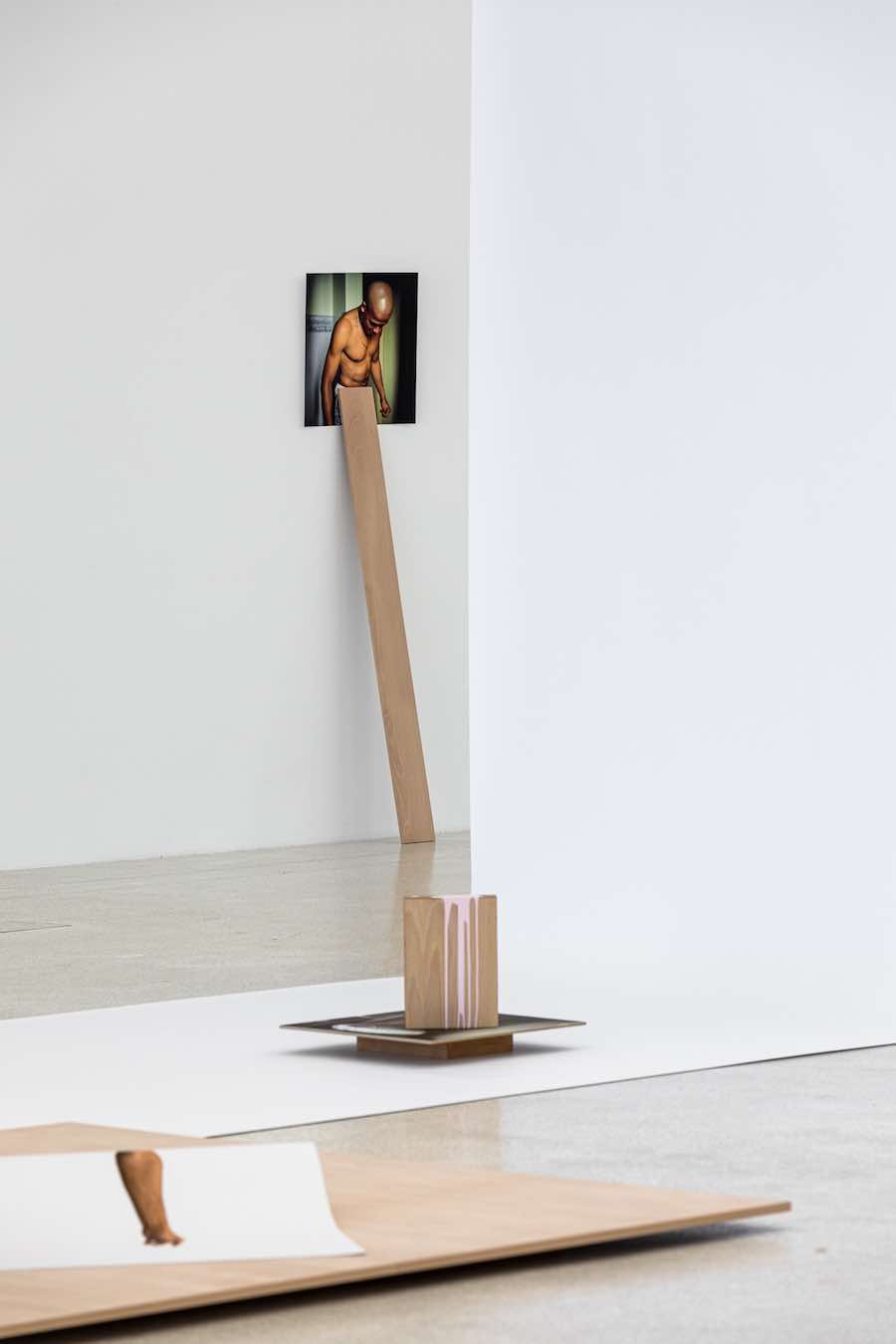
Interview with Jimmy Robert
Exhibition duration: 28.05.2021 – 29.08.2021
Curated by Bart van der Heide in collaboration with Frida Carazzato
In collaboration with Nottingham Contemporary and CRAC Occitanie.
Sara Benaglia: What is the vulnerability of paper for language and for gesture?
Jimmy Robert: I equate the vulnerability of paper to the one of both language and gestures. They are interdependent. I am just coming back from giving a lecture at the Royal Danish Akademie on the subject of why words now and within this talk I mention how to me words on a page have this quasi porosity just like skin and therefore could become an access to another sense and transcend the page just like language is more than words but affect us in the real and lead us to act or feel in a certain way, equally a gesture can be read in many ways therefore is part of our emotions too and unveils some of our vulnerabilities/sensitivities.
SB: How do you play with movement in the scenography of an exhibition, without a performance or the performance of the object?
JR: I would like to think that I choreograph the movement from one work to the next as well as how a potential spectator needs to renegotiate their relation to artworks in space and not take this relation for granted. There is still work to be done while viewing an exhibition, choices to be made. A path to choose which affect how one may understand a practice, a point, a sentence, meaning itself eventually. So this implies that one may have to bend to look at something on the floor which is normally up on a wall, question the wall itself as the obvious place where one is supposed to find an artwork. Get a proximity which underlines one’s own corporeality, touch, breath or footsteps if overstepping onto the white paper on the floor thus marking their own presence in the show.
SB: What affinity is there between your work and Stanley Brouwn’s (Suriname, 1935 – Amsterdam, 2017)?
JR: stanley brouwn, as this is how he wanted his name to be written without upper cases has remained unknown to me for quite a long time and the reason for this may have been his desired invisibility which of course creates not only an aura but also curiosity. I guess that to him the work is paramount beyond is personality but to me what is the most interesting is how despite this invisibility his body is the departure for a lot of his works and therefore becomes a way of marking space and measuring it through his subjectivity and inscribing himself into the very world he has tried and managed to remove himself from.
SB: Some of your works come from recovering portraits to which you add a folded piece of paper to give them an extra dimension (maybe life?). How did this process come about?
JR: This process came about from a frustration with the material limits of photography and maybe life itself, meaning the act of representing is a very limited one not just in terms of whom gets to be represented but also how. The flatness of images has always been troublesome to me and adding a layer to them is giving them a body, which I feel they lack, an extra surface which complicate their readings. A cover to also reveal even more that a lot is hidden within an image even if it pretends to be revealing information initially.
SB: What is the relationship between the choice of materials you use in your work and the mirroring in you, in your idea, through the work?
JR: I use paper as a projection surface, the paper, the words, the images, the films are all mirrors of ideas on representation, performance, identity, gender, desire and how to negotiate all those things in relation to our art historical legacies and hopefully the spectator can reflect in both significances of the word, meaning think and get an image of themselves back.
SB: What is the relationship between the choice of materials you use in your work and the mirroring in you, in your idea, through the work?
JR: I use paper as a projection surface, the paper, the words, the images, the films are all mirrors of ideas on representation, performance, identity, gender, desire and how to negotiate all those things in relation to our art historical legacies and hopefully the spectator can reflect in both significances of the word, meaning think and get an image of themselves back.
SB: Is photography a performance?
JR: I don’t know ask all those kids who spend hours preparing a picture before they post it on instagram!! If not a performance then at least it is a lot of work, or maybe a lot of negotiations with the world and yourself and how one wants to be seen or not within this world of images. Photography can also become a performance when it becomes an object which resists its framing, the walls, the gaze or absorbs it through it porosity and becomes a surface that we can potentially touch. All these acts or moments become forms or ways of performing, ways of resisting.
